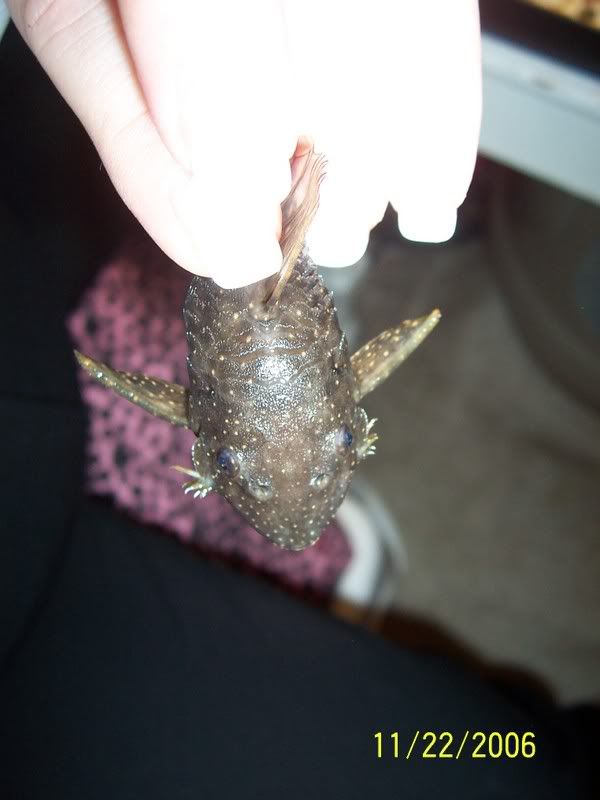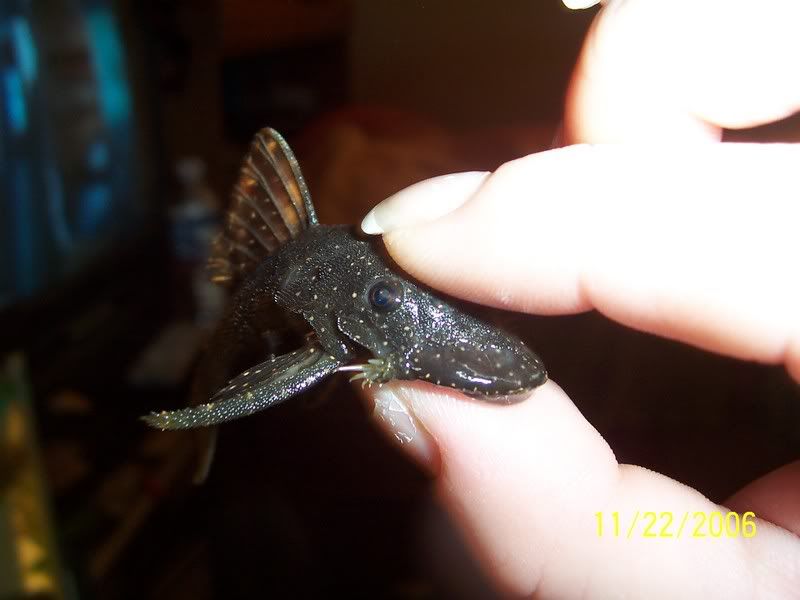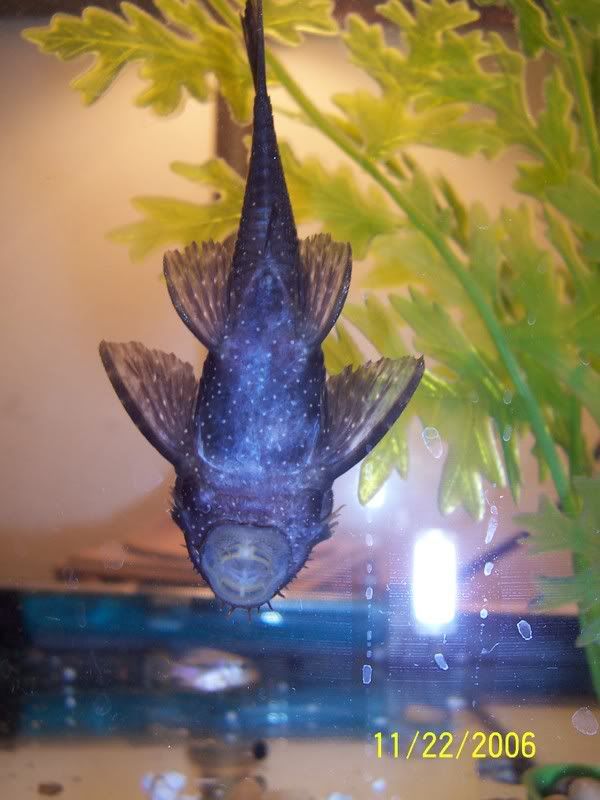Page 1 of 1
I've got one for ya!!
Posted: 23 Apr 2007, 21:22
by gringa_54
Okay guys I have this guy for a while now, and I suspect that he is from the bristle nose family but I am not sure what kind....Can you guys help me?
Here ya go...



Posted: 23 Apr 2007, 21:37
by Lornek8
Posted my opinion elsewheres. I was going to recommend you post here for other opinions, looking forward to what Yann & the others have to say.
Posted: 24 Apr 2007, 10:41
by MatsP
Definitely
, but species is much harder to place, as there are several different species with very similar pattern.
What is is "supposed to be" according to the seller? Do you have any information on where it came from?
--
Mats
Posted: 24 Apr 2007, 16:04
by gringa_54
well the only thing the seller told me it was was a bristle nose plec...And that's the only info that I picked up from the seller about the cat....
Do I have you guys stumped yet?
Posted: 24 Apr 2007, 16:36
by MatsP
Not in the actual meaning of "stumped". I'm not "baffled" by the fact that I can't recognise some species of Ancistrus and determine exactly which one it is, because I know that there are at least a hundred[1] different species of Ancistrus (60 of which are scientifically described). Many of those are similar in looks, and can only (externally) be identified by such things as "it came from river X in country Y". [Obviously, examining the fish by disecting it tends to end it's life, but can give further clues as to it's identity if it's been described more recently so that there is a detailed description of the species].
There are a few that have pretty special "looks" or otherwise have unique features, but your fish isn't one of those.
That's like holding up (or showing a picture) of a piston from some engine, and with no further details expect the person to identify which engine it came from. Unless it's got VERY SPECIAL features, it will be near on impossible to tell [obviously, we assume in this case that it doesn't say "Honda", "Chevrolet" or "Ford" on the side of the piston, which would drastically reduce the number of possible choices - but if you don't even know if it came from a car, aeroplane, generator, motorcycle or chainsaw, someone could be looking for quite some time before a match is found based on dimensions only - assuming it's possible to find the dimensions listed somewhere at all].
In the case of fish, the river that the fish came from is equivalent to the manufacturer stamping on the piston in the above example. Of course, it's not stamped into the fish, but it's of the same in the sense that it's reducing the number of options to look through.
Further, it's probably fair to say that some of the older descriptions of Ancistrus (and other genera) have not always been very precise, and the "key" to determining the different species of Ancistrus definitely has many holes in it.
[1]T he number of species estimated varies depending on who you ask. There are 77 different species in the Cat-eLog. Only 17 of those are formally described. So add together the 60-17 from Fishbase with the 60 that are undescribed in the Cat-eLog, and we get 103 - but some of those MAY have been described, so it's not sure. What is almost sure is that there are further undescribed species out there - Shane (Linder) says that there may well be one species for each river in South America. Depending on what you classify as a river, that would count to several hundred or thousands of different species.
--
Mats
Posted: 24 Apr 2007, 20:04
by gringa_54
okay...
no need to get huffy about it...
I was just joking....
I understand, quite well, that there are many different possibilities of what species this plec is.
Posted: 05 May 2007, 05:26
by kcmt01
MatsP wasn't being huffy, he was being British.
Posted: 05 May 2007, 09:01
by Shane
Just to second that "huffy" is not Mats' style. Gringa, with only three posts on the forum Mats had no way to know what your level of expertise is. I actually thought his analogy was a good one.
-Shane
Posted: 06 May 2007, 17:26
by Yann
Hi!!
if you had them under A. leucostictus... very likely they are A. sp "Rio Ucayali"!!!
Cheers
Yann






